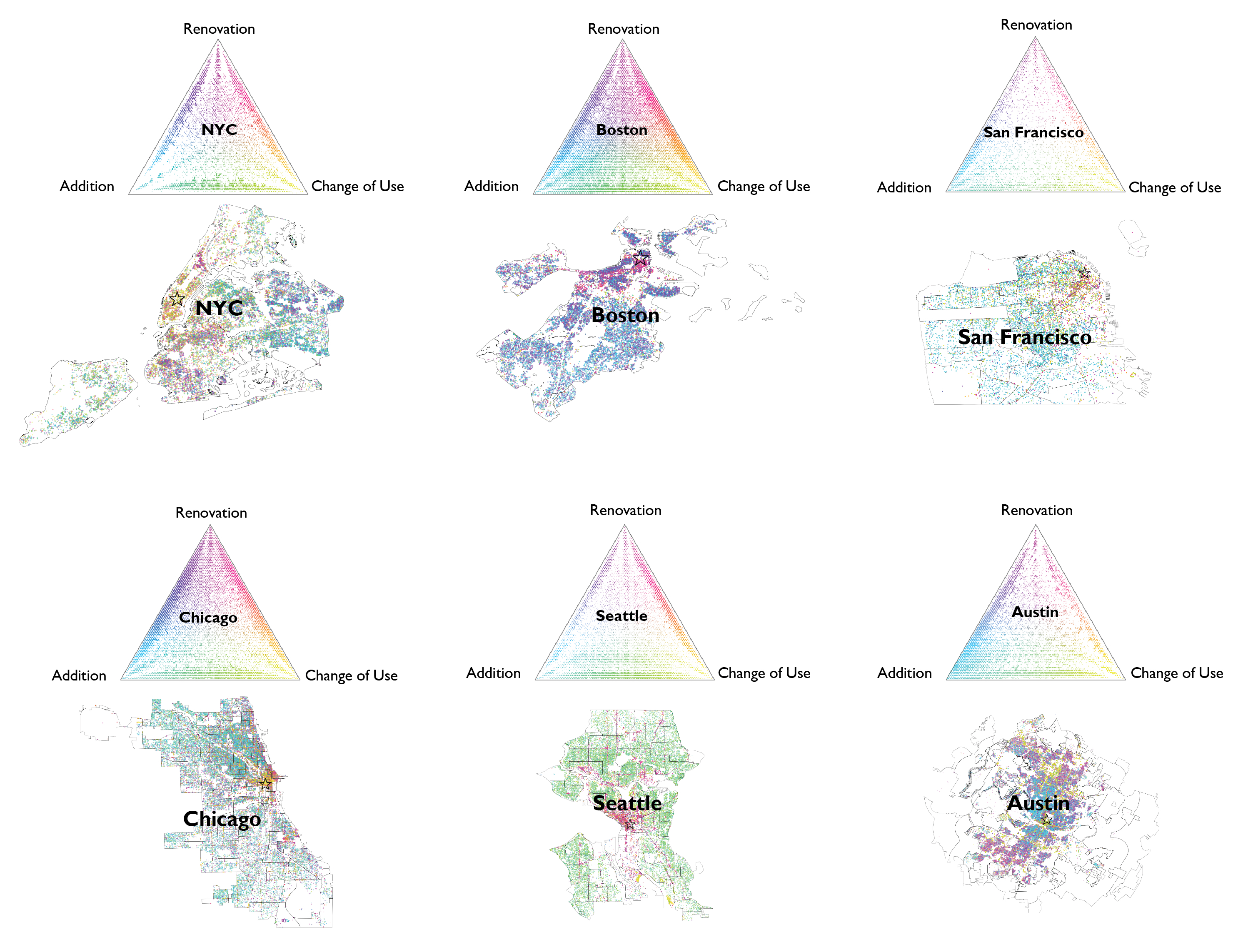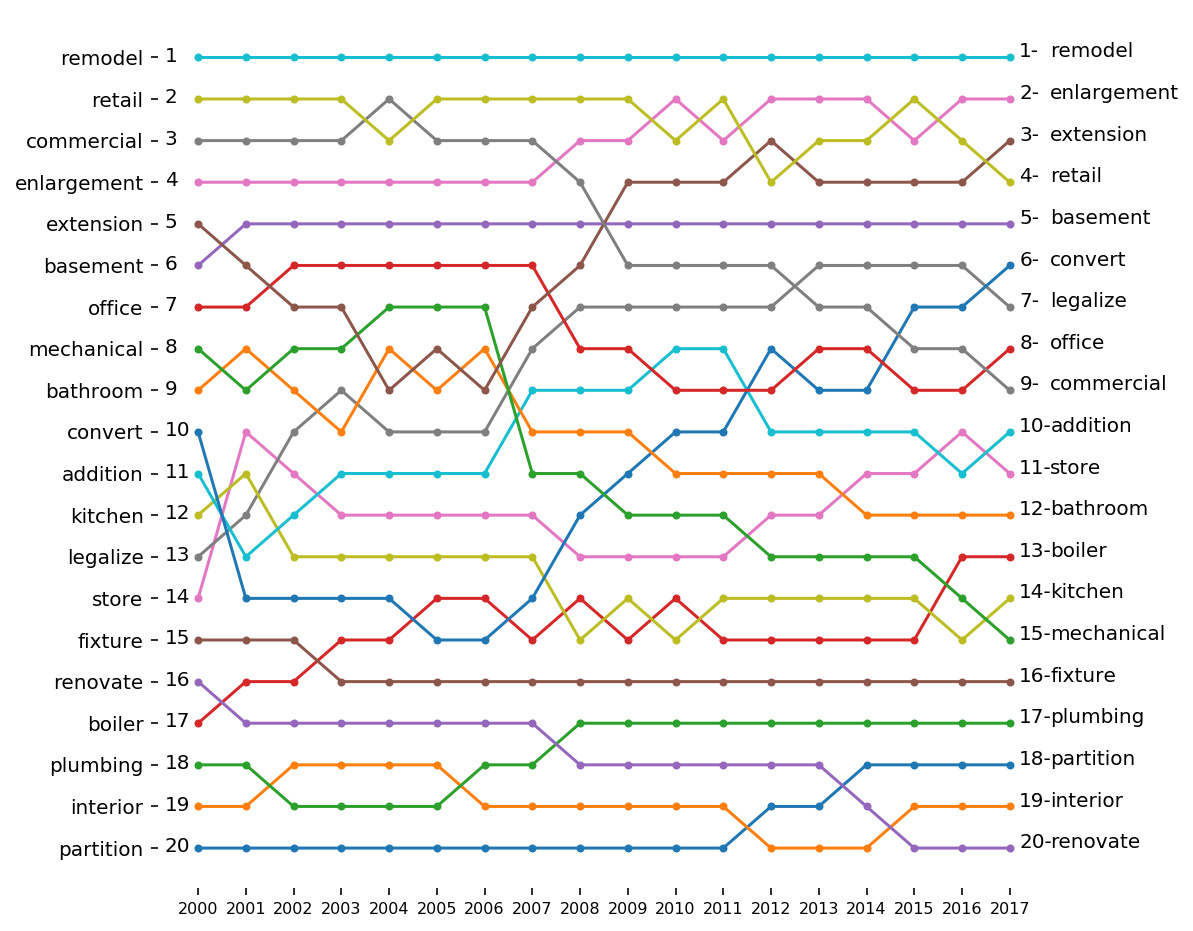Topic Modeling to Discover the Thematic Structure and Spatial-Temporal Patterns of Building Renovation and Adaptive Reuse
The full research paper is published in Computers, Environment and Urban Systems vol. 78 (2019). For citation: Lai, Y., & Kontokosta, C. E. (2019). Topic modeling to discover the thematic structure and spatial-temporal patterns of building renovation and adaptive reuse in cities. Computers, Environment and Urban Systems, vol.78, 101383.
Building alteration and redevelopment play a central role in the revitalization of developed cities, where the scarcity of available land limits the construction of new buildings. The adaptive reuse of existing space reflects the underlying socioeconomic dynamics of the city and can be a leading indicator of economic growth and diversification. However, the collective understanding of building alteration patterns is constrained by significant barriers to data accessibility and analysis. We present a data mining and knowledge discovery process for extracting, analyzing, and integrating building permit data for more than 2,500,000 alteration projects from seven major U.S. cities. We utilize natural language processing and topic modeling to discover the thematic structure of construction activities from permit descriptions and merge with other urban data to explore the dynamics of urban change.
The knowledge discovery process proceeds in three steps: (1) text mining to identify popular words, popularity change, and their co-appearance likelihood; (2) topic modeling using latent Dirichlet allocation (LDA); and (3) integrating the topic modeling output with building information and ancillary data to discover the spatial, temporal, and thematic patterns of urban redevelopment and regeneration. The results demonstrate a generalizable approach that can be used to analyze unstructured text data extracted from permit records across varying database structures, permit typologies, and local contexts. Our machine learning methodology can assist cities to better monitor building alteration activity, analyze spatiotemporal patterns of redevelopment, and more fully understand the economic, social, and environmental implications of changes to the urban built environment.

Simplex plots and maps visualize thematic patterns of building alterations.

Simplex plots and maps visualize thematic patterns of building alterations.